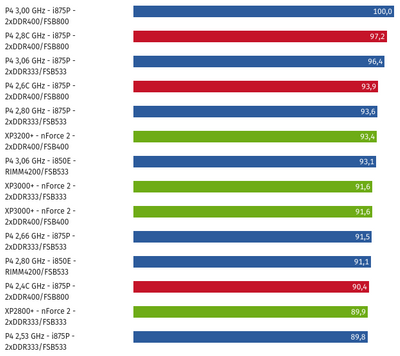First post, by Fish3r
Hi all, apologies for potentially igniting a 20 year old debate with this question but I've been playing around with early XP (~2003) builds and am a little confused.
I rebuilt my first gaming PC recently (Athlon XP 3000+ Barton, geforce fx 5900xt, 1gb ram) and for fun I got a Pentium 4 rig (2.8ghz Northwood) to see what I was missing out on and it's outright faster than the Athlon machine. My understanding was that a 3000+ should be equivalent to a 3Ghz Pentium 4 but this doesn't seem to be the case. Games are a lot smoother on the P4 machine with both using the same GPU.
I can't seem to find a definitive answer to this online with searches mostly turning up ancient forum arguments. Were the performance ratings referring to the initial slower P4s?
